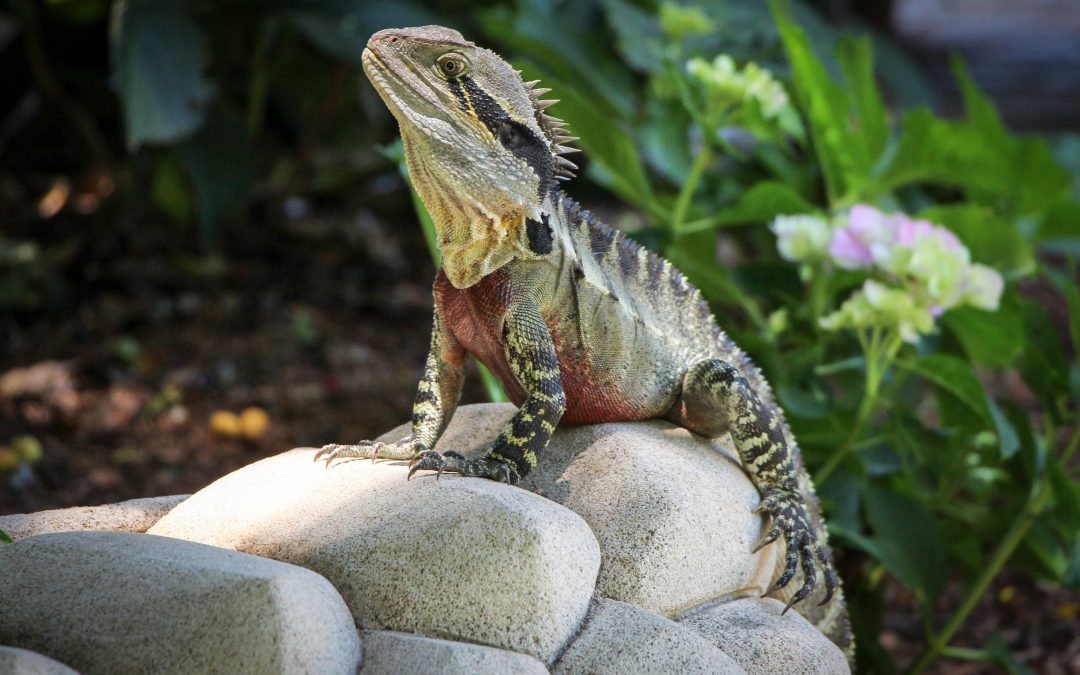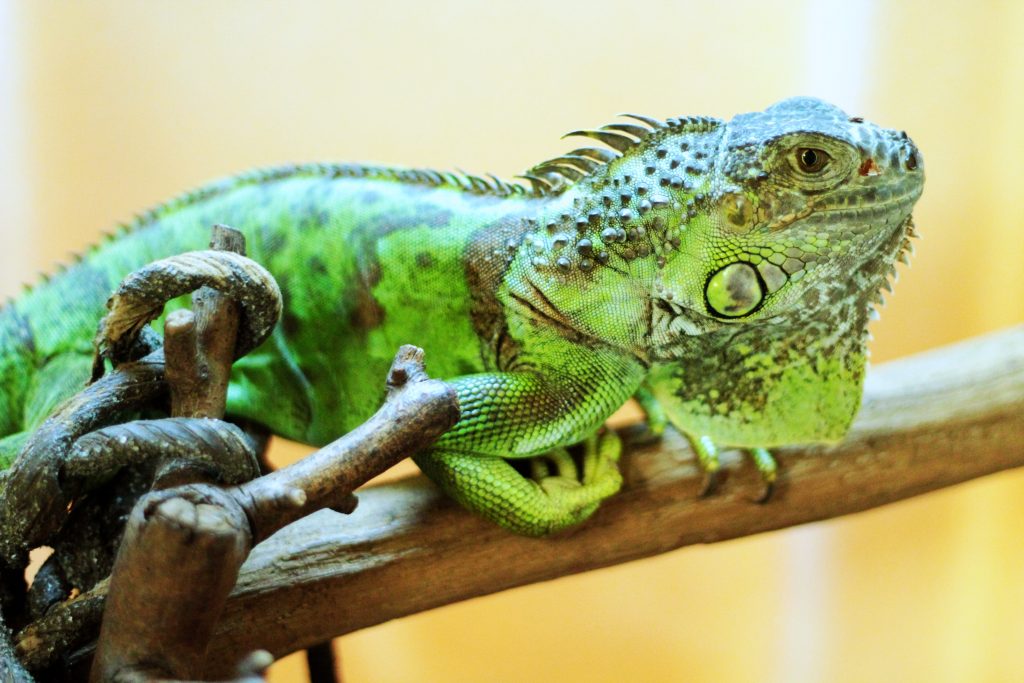Some people just get a reptile pet and put them into any reptile cage they can find, but there are some important things to think about before placing your pet into a captive environment.
There are housing measurements to consider for the pet’s sake, for example, and not just where it will fit in the room. One must also consider the fresh air that might be required and whether the lizard, snake etc. is a semiaquatic reptile or not. Some more things to think about are:
Housing size is the most essential thing to consider. If you have an arboreal tree dwelling type critter, you need a tall house. But if you have a terrestrial creature that spends all its time on the land, then you will need a long habitat.
A reptile cage can be a tank or a terrarium. A tank is a closed container that is used to contain reptiles, amphibians, and invertebrates. A terrarium is a container, usually glass or plastic, with a lid and screen top that can be used to contain reptiles, amphibians, and invertebrates.
For example:
- Lizards need a cage that has a few inches of sand or soil to help them digest their food. They also require a hiding place, such as a log, rock, or plant.
- Turtles need a large tank with a filter and heater. They require a place to hide, such as a log, rock, or plant.
- Chameleons require a cage that has branches for climbing and plants for eating. They also need a small
Still, if you have an aquatic reptilian friend, you will need an aquarium of suitable size or a large habitat capable of holding a watery environment.
For those of you that want a gecko or maybe a dragon, you will want to plan on terrestrial type housing with plenty of floor space. If you house two creatures together, you need to figure increasing the space by one half of what is normally recommended. Most reptiles will need a minimum of 30% floor space above and beyond their habitat.
So if you have set up an all natural rainforest habitat or desert habitat, then provide the 30% in addition to the plants or rocks and such. This is because they require that room for exercise, eliminating waste and eating.
A Reptile cage must be escape resistance, preferably escape proof. For a lid with an aquarium setup, you would have to have a mesh lid, so the reptile would have enough fresh air.
If you use a wire enclosure, be sure it is plastic coated as injury to the lizard’s toes or snake’s nose etc. could result from trying to squeeze through openings. You also need to research what material is easy to keep clean.
Some of the best material I have heard of for a cage is nylon mesh. It is very strong yet it will not be abrasive to your pet even when they rub. It gives ideal ventilation yet doesn’t have openings that tails, claws, noses can poke into and get injured.
There is also a benefit of not having injuries when startled due to hitting the side of their enclosure. So in your search for Reptile Cages, keep this information available.
Quick Notes about Cages for Iguanas
Because it is so dissimilar to other types of pets, the iguana will require certain special needs attended to and will also have additional requirement for its safety. The most common requirement is keeping the iguana safely secured in an iguana cage.
If there ever were a reason to have a solid iguana cage, it would be to safeguard your iguana. While this would seem academic, most people take the safety of their iguana for granted.
This, sadly, can lead to results that can be seriously problematic for iguana and iguana owner alike.
In a way, one feels bad for a pet iguana when the poor creature is locked up in an iguana cage. One does feel bad, however, only when one does not realize that the iguana is safe in the iguana cage unless, of course, the iguana’s owner is paying strict attention to the animal.
If ever there was a sincerely sad situation, is when the owner leaves the iguana out of the iguana cage and stops paying attention it. Then, when time goes by, the owner will look for the iguana and cannot find it.
When the owner comes across an open window, it is fairly safe to assume what has happened. That, sadly, is the only thing that will remain safe, as the iguana’s chances for survival on the outside in an environment that is totally alien to its natural habitat are very slim.
So, keep your iguana either in full supervision or keep it secured in its cage. It’s your pet; treat it with love.
Building a Terrarium for Your Pet Reptile
Here’s a great video about a DIY pet reptile bearded dragon terrarium project.
There are certain materials that are better for building a reptile terrarium, and there are a number of natural products you can use in the terrarium to make a lifelike environment for your lizard or snake or other reptilian friend.
While many materials can and should be used to make a naturalistic enclosure these can also lead to less room so a person needs to make sure there is sufficient room for the intended reptile to properly move about and to feed etc…
Another important fact to consider when putting together a terrarium is that an open enclosure design is a far better habitat for a lot of reptile species than a glass tank or enclosure.
Why? Because in their natural environment they have a lot of fresh air supplied to them which allows much needed circulation. If you keep this fact in mind and plan accordingly you will have much more success with your pet reptile.
Some things you will need in your terrarium are:
**Exactly what you use depends on species**
For the habitat use:
* screen or a screen and glass terrarium
For the bedding use:
* sterile soil, digestible sand, bark bedding, aspen, coconut fiber, corn cob
For a hiding place use:
* rock caves, logs or hollow logs decorative pet items
For a basking area use:
* flat rocks, branches, artificial or natural logs that are hollowed and for basking these all should be smooth
For plants use:
* reptile safe non-toxic live plants like philodendron, artificial plants
For branches use:
* Natural wood or artificial for climbing
Now, put some bedding into the bottom, choose your decorations and other materials and place a lamp for reptiles above the terrarium.
Select your pet’s home wisely based on some research about the pet reptile you really want and do your best to create a terrarium that looks natural to your new companion.
There is one thing you should remember in selecting your terrarium, and that they are aquariums and usually designed for fish. And, at the most, the lids are only partially adapted to a reptile’s needs.
At the least, these lids are typically not high enough for a reptile. With this said, you can find a terrarium made of all nylon material that might be quite adequate for you to use for your reptile terrarium.
Reptile Misting Systems
A Reptile misting system can provide and help to maintain a healthy environment for your reptile or amphibian friend.
While there are many products available for controlling the humidity for you, there are also more time-consuming and manual ways to provide the humidity your pet needs. Here is some information that will help you in your journey to purchasing the right spray or fog equipment.
A lot of reptiles or amphibians require a certain level of humidity, often the humidity might need raised as much as 35% or more. A Rainforest creature might need ambient humidity levels that exceed 70% humidity. While some recommendations have been made to provide a bowl of water for humidity, this is usually totally inadequate.
Some people help to provide moisture and a bath for their pet lizards by misting them with hot water placed in a hand held mister bottle. This could be quite a good routine and provide some good interaction.
It might be all you require if you have a reptile that doesn’t come from a very high moisture environment. There is also the possibility that you can provide adequate moisture without misting equipment by using thick vegetation.
There are several mechanical drip systems, misters, foggers and such that can provide the ideal environment for your pet or even provide drinking water for critters that don’t want to drink from a bowl.
Also, there are decorations that serve a real mechanical purpose and contribute to the overall health and humidity of your pet reptile’s home. One such item is a very real looking volcano that has a unique misting feature. The volcano emits a fog sent out by ultrasonic vibrations. It is a fantastic decorative way to increase the humidity in a pet’s enclosure.
In order to keep your pet healthy and maintain optimum conditions for your pet reptile, consider buying an automated misting or fogging system. But make sure you have put them in an environment that can tolerate all that moisture, right.
Most of these systems can be set up to simulate wet and dry cycles of a tropical environment, but you still don’t want moss growing on your living room wall.
So, you can give your tropical reptile such as an iguana, salamander, turtle or water dragon all the moisture it needs with a quality reptile misting system.


